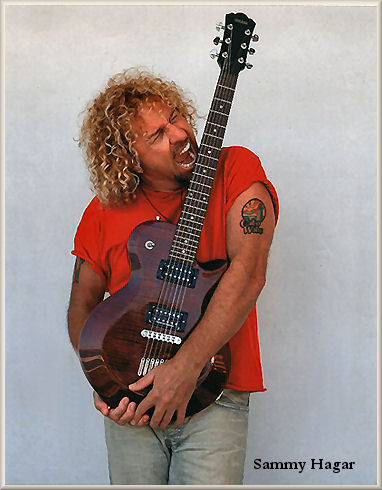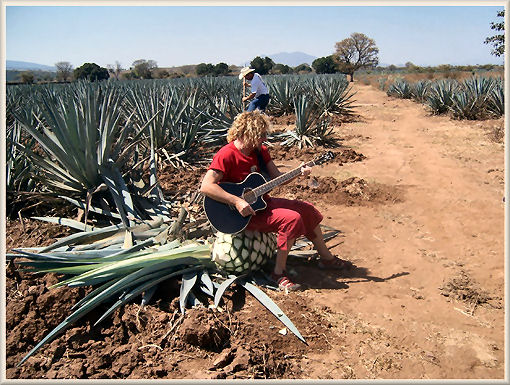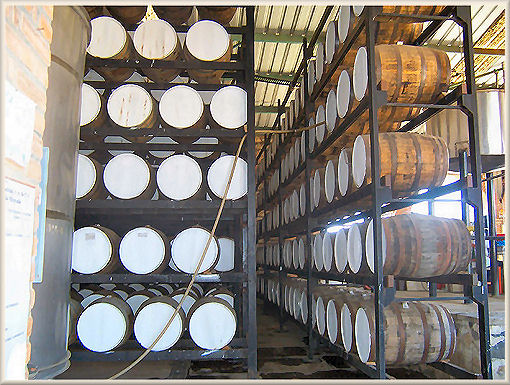by Stacy Perman A
April 2nd, 2007
The former lead singer for Van Halen opened a bar in a tiny town in Mexico as a lark. Today, his Cabo Wabo Enterprises is a booming business.
Sammy Hagar, the former lead singer for the mega-band Van Halen, is renowned for his soaring vocals and stadium showmanship. However, for the past 15 years, Hagar has earned another reputation: entrepreneur. As the founder and frontman of the 200-employee, Novato (Calif.)-based Cabo Wabo Enterprises, with about $60 million in revenue, Hagar is behind a top-selling line of premium tequilas, as well as a growing chain of tequila bars, aptly named the Cabo Wabo Cantina.
“Like many people, my first introduction to tequila was probably around the toilet,” jokes Hagar, who at 59 still has the youthful exuberance of an arena rocker. “Still, I dug the salt and lime. It was a fun drink.”
But in 1982 he sampled the good stuff” premium Blanco tequila” during a visit to Cabo San Lucas, a small Mexican fishing village on the tip of Baja California. “It changed my life. I had the true taste of tequila, and I became a Blanco freak,” says Hagar. Thus a businessman was born.
Ten years later, Hagar opened his first Cabo Wabo Cantina in that same speck of a town, envisioning a place where he could drink tequila and play music when he was bored. “It was just an ego trip,” he says. “The town wasn’t even big enough to accommodate the idea.”
In fact, his business manager quit over the project. “She thought it was the stupidest idea,” he recalls. “She said I’d spend a half a million dollars, we’d get sued, and it would be a money pit.”
Famous Friends
Although Van Halen and the band’s manager also thought it was a lousy idea, Hagar got members of the band to come in as partners. Together, he says, they invested a total of about $400,000. The Cantina kicked off with an MTV party, for which the music network flew in 300 fans. But Hagar says that following the launch, business slowed to a trickle, and the village, little more than a ghost town at the time, couldn’t support it.
“The guys in Van Halen got sick of it,” he says. “We lost money for five years” about $40,000 a year”[but] that’s pocket change to those guys. They said the place was too hot, there were no telephones and no TV. But that’s what I loved about Cabo.” So Hagar took sole ownership of the Cantina.
Then things turned around. Hagar brought in a new manager to run the bar. At the same time, Cabo San Lucas started to earn a reputation as a tourist destination. The surge brought new infrastructure, paved roads, and new hotels. And people began flocking to Hagar’s cantina.
Before long, Cabo Wabo was out of debt and turning a profit. “We first made about $30,000 to $40,000 a year, and then we started making a lot of money,” says Hagar. “I didn’t give a crap about profits. I thought if this place could just break even it would be a great place to play.” Soon, rockers like Iggy Pop, U2, and Guns ‘N Roses began flying down to play at the little cantina.
Packed House
By 1996, Hagar decided he wanted to produce a premium tequila to sell at the bar. He partnered with the Rivera family that had owned and operated a distillery in Jalisco since 1937.
It was a tiny operation. At first, they sent Hagar their handmade tequila in jugs, vats, and five-gallon gas cans. Hagar stored it at the bar in a little barrel and served it in porcelain bottles with cork stoppers.
“Every step of the way, this was organic,” explains Hagar. “I had no intention of starting a tequila business. I just wanted this to be the best tequila in the world and sell it in the bar. Period.”
However, Hagar’s business continued to grow as Cabo San Lucas developed. In 1998 the town became part of the cruise ship circuit. “[The cantina] was packed all the time whether I was playing there or not,” says Hagar. And more and more people discovered his Cabo Wabo tequila. “It was way beyond my hopes and dreams. It just exploded, and I knew this could be a real business.”
In 1999, Wilson Daniels, a top wine importer based in St. Helena, Calif., launched a spirits division and contacted Hagar about distributing Cabo Wabo in the U.S. According to Hagar, the company signed an order to purchase 6,000 cases of his tequila, which retails for about $50 a bottle. That first year they ended up selling 37,000 cases. Last year, Cabo Wabo sold 140,000.
Rising Spirit
What began as a hobby is now a serious business. According to Stephen Kauffman, Cabo Wabo’s president, and an industry veteran, for the past several years the company has seen sales growth of 25% annually. And he says Cabo Wabo is tied for the No. 2 superpremium tequila spot with Don Julio, behind Patrón in the U.S.
The brand is also sold in Canada, Australia, and Mexico, and there are plans for a larger global market push. This month, following his induction into the Rock & Roll Hall of Fame, Hagar introduced Cabo Uno, a $250 limited-edition reserve.
Kauffman says the company is also considering other brand extensions, such as a beer label. It already sells T-shirts and other accessories bearing the Cabo logo. And in 2004, Hagar opened his second Cabo Wabo Cantina at the Harrah’s casino in Lake Tahoe. A third in Las Vegas is scheduled for 2008.
Cabo Wabo has followed the upswing in the fast-growing U.S. tequila market. Made from the spiky-leafed agave plant found in central Mexico, the distilled spirit, once considered a low-end party drink, has seen a renaissance due to an increase in demand for high-end tequilas.
According to Nielsen Scantrack and LiquorTrack, sales of tequila rose 12.5% in 2006, grabbing a 6% share of the total $58 billion U.S. spirits market ”nearly triple the pace of overall spirits, which grew 4.5% (see BusinessWeek.com, 5/5/05, “A Margarita Maker Worth His Salt” and BusinessWeek.com Video 5/20/06).
The Worm Turns
A number of factors including the continued popularity of margaritas are behind the surge in demand. For one, an agave shortage in 2000 spiked prices, narrowing the gap between the cheaper and more luxe offerings. And many of the largest liquor conglomerates such as Diageo, Seagram, and Allied Domecq, as well as smaller boutique labels, have all recently jumped into the premium tequila business.
Eric Schmidt, manager of information services at Adams Beverage Group, an alcoholic beverage research outfit based in Norwalk, Conn, says that in the past few years many new brands have entered the market. According to his tracking, in 2004 there were 13 new entrants, in 2005 that number rose to 19, and in 2006, 40 new labels joined the party. To understand just how far tequila has come from the $7-worm-in-the-bottle iteration, Patrón recently introduced a limited-edition Gran Patrón Bordeos priced at $400 a bottle.
As for Cabo Wabo, Schmidt says: “[Hagar] has created a great niche. As far as the affiliation with Hagar and the party atmosphere, they’ve done very well. But on a volume basis, it’s relatively small.”
Being a huge corporate brand was never in Hagar’s plan. Refusing to deploy a team of marketers, he relied on his grassroots rocker platform to spread the word. In 1999 he wrote the party anthem Más Tequila, and he says he always mentioned the brand in interviews.
Just Like Martha
Moreover, on tour with his solo band the Waboritos (he stopped formally fronting Van Halen in 1996), he created mini versions of his bars on stage featuring bikini-clad waitresses serving tequila. His annual October birthday parties held at the Cantina in Cabo San Lucas attract thousands of fans who party with Hagar free of charge.
This past March he hosted a week-long Cabo Wabo cruise from Los Angeles to Cabo San Lucas. Although tickets cost between $1,249 and $4,619, it was sold out.
Hagar says the secret to his success is that he maintained authenticity by turning his lifestyle into a business ”kind of like Martha Stewart for the hard-core partying set. “I didn’t want layers of people telling me what to do,” he says. “I didn’t want a CEO and a chairman, and a president and vice-president and head of marketing.”
Instead, Hagar says he has a small group of people who work for him. “Before I made it as a rocker, I had a lot of executives tell me what to do to make it, and I never listened to them,” he says. “They’d tell me to write a song like this or I’d never make it. But I did it my way. And the same thing here, many business people were trying to convince me that to make this a great thing, I had to have a corporate structure and involve people who knew what they were doing. I don’t believe that. I didn’t want to make it like that.”
Creative Decisions
Indeed, while Hagar says he could have rolled out 80 Cabo Wabo Cantinas by now, he remains cautious about diluting the unique brand experience he has created. He’s thinking about launching cantinas in Orlando, Atlantic City, and Fresno, Calif., but he fears turning the lucrative tequila bars, which account for about 25% of his business, into a cookie-cutter chain. “I’m fighting with myself on this one,” he says.
Right now, Hagar is content to both play the party and host the bar. “I like owning and operating a business,” he says. “It’s as creative as stepping on stage or making a record.”
Of course, this is one businessman with a buzz.
For a look at how Hagar’s Cabo Wabo tequila is made, click here.
Agave Distilleries
There are more than 50 tequila distilleries in the state of Jalisco. Most are family-run and pass the art of tequila making through the generations. Hagar’s Cabo Wabo is produced by the Rivera family, which has been making tequila for more than 80 years.




